 |
 |




|
 |
 |
 |
SOFTWARE/Mathematica |
| |
Deploy
Deployment & Connectivity
Reports,
presentations, websites, applications—Mathematica provides a variety of
deployment options for delivering results. They're seamlessly
integrated into your workflow alongside many ways to connect, control,
and work with external data sources and systems.
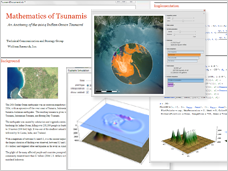 Live
notebook documents: Mathematica documents shared with others can
include formatted text, graphics, interactive applications, code, and
data, and be distributed as reports or presentations. With the
Mathematica Player family, colleagues and clients can view and run
dynamic content. Live
notebook documents: Mathematica documents shared with others can
include formatted text, graphics, interactive applications, code, and
data, and be distributed as reports or presentations. With the
Mathematica Player family, colleagues and clients can view and run
dynamic content.
- Applications deployment: Explore ideas faster with
instant applications. Create everything from small educational examples
to professional analysis and modeling tools. Allow anyone to view and
run them with the free Mathematica Player.
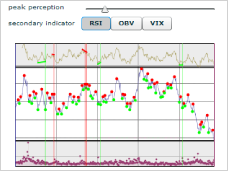 Dynamic
web deployment: webMathematica deploys high-powered Mathematica
applications as interactive websites. It works seamlessly with modern
web standards and services to add dynamic content and computations on
the web. Dynamic
web deployment: webMathematica deploys high-powered Mathematica
applications as interactive websites. It works seamlessly with modern
web standards and services to add dynamic content and computations on
the web.
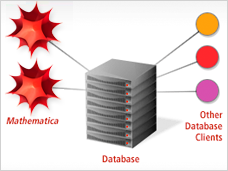 Built-in
connectivity with databases and applications: Built into Mathematica is
live integration with SQL databases and languages including Java, .NET,
and C/C++. Mathematica also understands hundreds of standard file
formats—so you can plug a Mathematica solution into your existing
infrastructure immediately. Built-in
connectivity with databases and applications: Built into Mathematica is
live integration with SQL databases and languages including Java, .NET,
and C/C++. Mathematica also understands hundreds of standard file
formats—so you can plug a Mathematica solution into your existing
infrastructure immediately.
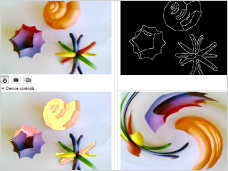 Real-time
image acquisition: With built-in image capturing, Mathematica can
easily acquire a single image or stream of images from a camera and
perform real-time processing using a broad range of functions for image
processing, wavelet analysis, graphics rendering, and more. Real-time
image acquisition: With built-in image capturing, Mathematica can
easily acquire a single image or stream of images from a camera and
perform real-time processing using a broad range of functions for image
processing, wavelet analysis, graphics rendering, and more.
- Generate report documents: Programmatic report
generation includes batch processing, modification, or evaluation of
notebooks from within programs or other notebooks. Reports can be
generated in many formats including PDF, spreadsheet, HTML, and RTF.
- Deploy as a service engine: Mathematica powers other
applications in a variety of ways: it can call and be called by C,
.NET, Java, and other languages; automatically generate C code; and
compile standalone dynamic libraries or executables.
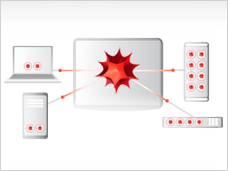 Cluster
deployment: With gridMathematica, applications run in parallel across a
cluster for faster execution, with automated process coordination and
management. Ad hoc local clusters created by Wolfram Lightweight Grid
Manager add more power to parallel Mathematica tasks. Cluster
deployment: With gridMathematica, applications run in parallel across a
cluster for faster execution, with automated process coordination and
management. Ad hoc local clusters created by Wolfram Lightweight Grid
Manager add more power to parallel Mathematica tasks.
- Web services and standards: Mathematica has built-in
support for application-to-application communication with
WSDL-specified web services and for standard web file types and
formats, including XML, HTML, RSS, and image formats.
- Gamepad and human interface device support: Seamless
integration of almost any kind of controller or human interface device,
including gamepads, joysticks, haptic devices, 3D mice, and more,
enhances interaction with controls, 3D graphics, and other document
elements. Mathematica provides a general programming interface that
allows the use of controller devices in any application.
Productivity & Usability
Mathematica streamlines your workflow, maximizing productivity and
easily transforming your results into interactive presentations and
reports. With versatile programming approaches, instant dynamic
content, and free-form linguistic input that lets you explore new
functionality without focusing on syntax, Mathematica handles projects
of any scale.
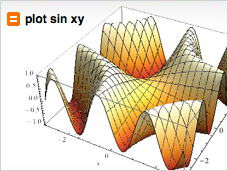 Free-form
linguistic input: Free-form linguistics provides a flexible way to
communicate with Mathematica, unrestricted by syntax. Whether you are a
new user eager to get started or an expert exploring new functionality,
using free-form input delivers quick results as well as the exact
syntax for future use. Free-form
linguistic input: Free-form linguistics provides a flexible way to
communicate with Mathematica, unrestricted by syntax. Whether you are a
new user eager to get started or an expert exploring new functionality,
using free-form input delivers quick results as well as the exact
syntax for future use.
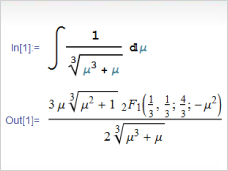 Live
math typesetting: Mathematica moves mathematical typesetting beyond a
simple equation editor. Expressions can be input in a fully traditional
form and then immediately evaluated to produce typeset output that can
be edited, reevaluated, exported, and so on. Live
math typesetting: Mathematica moves mathematical typesetting beyond a
simple equation editor. Expressions can be input in a fully traditional
form and then immediately evaluated to produce typeset output that can
be edited, reevaluated, exported, and so on.
- Active documentation with 100,000 examples:
Mathematica documentation is comprised of interactive notebooks
containing more than 100,000 examples. All examples are immediately
executable and modifiable, making it easy to rapidly learn new
functions.
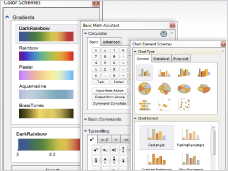 Assistant
palettes: Palettes provide immediate point-and-click access to an
extensive range of capabilities, from creating syntactically complete
expressions and inserting special characters to building up charts and
slide shows. They serve as convenient entry points for novice users and
as useful shortcuts for experienced users, who can also create their
own customized palettes with fully programmable functionality. Assistant
palettes: Palettes provide immediate point-and-click access to an
extensive range of capabilities, from creating syntactically complete
expressions and inserting special characters to building up charts and
slide shows. They serve as convenient entry points for novice users and
as useful shortcuts for experienced users, who can also create their
own customized palettes with fully programmable functionality.
- Document-centered interface: Mathematica documents
make exploring new ideas more efficient. Since they keep all elements
of a project—calculations, visualizations, data, documentation, and
even interactive applications—in one place, working on a problem means
automatically creating a document that can be used to solve similar
problems in the future, to present results, or to record different
avenues of exploration.
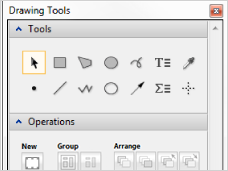 Integrated
graphics editing and drawing: Graphics can be created, annotated, or
modified using a full suite of familiar interactive drawing tools,
including sampling and application of styles, aligning objects using
guides, and adding formatted text and equations. Graphics can also be
used as input, such as for real-time algorithmic processing and
enhancement of interactive drawings. Integrated
graphics editing and drawing: Graphics can be created, annotated, or
modified using a full suite of familiar interactive drawing tools,
including sampling and application of styles, aligning objects using
guides, and adding formatted text and equations. Graphics can also be
used as input, such as for real-time algorithmic processing and
enhancement of interactive drawings.
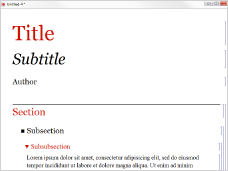 Integrated
word processing: Mathematica includes all the usual features of a
top-quality word-processing system, plus many additional capabilities.
The underlying symbolic structure of documents delivers full markup,
cascading stylesheets, and immediate global restyling. Documents can be
optimized not only for interactive use, but also for export to web and
print media. Over a thousand formatting and styling options are
accessible both from menus and programmatically. Integrated
word processing: Mathematica includes all the usual features of a
top-quality word-processing system, plus many additional capabilities.
The underlying symbolic structure of documents delivers full markup,
cascading stylesheets, and immediate global restyling. Documents can be
optimized not only for interactive use, but also for export to web and
print media. Over a thousand formatting and styling options are
accessible both from menus and programmatically.
- Integrated presentations: With Mathematica you can
immediately turn working notebook documents into slide shows containing
real-time computations and even interactive applications. The cell
structure of notebooks conveniently allows code used to generate
graphics or other elements to be hidden for presentation, yet
maintained in the underlying document.
© Copyright 2015 Wolfram Research.


|
|
|
 |



